In the Studio: Christian Việt Đinh
“My nail salon series is meant to celebrate the success of the Vietnamese nail s...

Anina Major is a New York-based artist and a 2023 Joan Mitchell Fellow. We interviewed her about her work and creative practice in February 2024. The following is an edited transcript of that conversation.
What are the things that make one feel like they belong? What gives one agency, and what are the value systems or structures around that? These are the questions and thoughts that started this creative journey. It came from a place of wanting to understand myself, at a time when I was entering what I would call real adulthood. For a long time, my identity was so contingent on being in a certain place and my connection to that place. When you say you're not going to be in that place anymore, what does that mean?
I was born and raised in The Bahamas, and at this time that I’m speaking about, I was faced with the reality that what I wanted to do with my life may mean that I would not live there. Initially, I had a lot of guilt and a lot of homesickness, which is a common phenomenon when you come from a smaller country and move to another one. There’s this guilt of abandoning one's culture, of not going back and contributing to that culture’s advancement.
How I dealt with that was through artwork, by making sculptures that held near the things that I admired about home. That exercise led me to where I am now, which is weaving with clay.
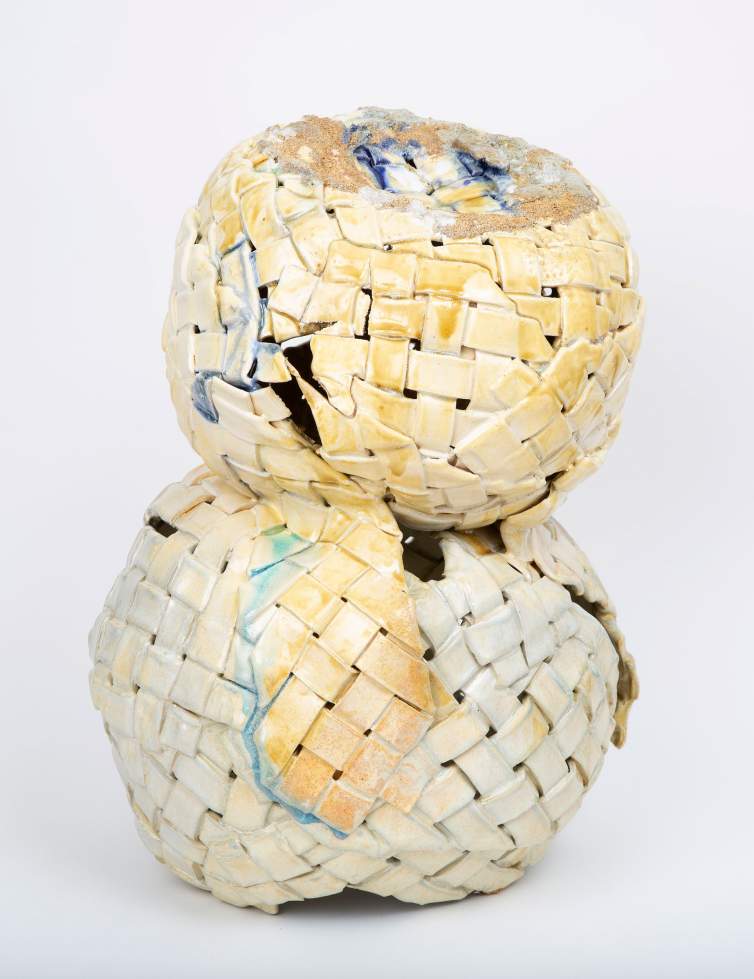
As I was working through these questions around culture, identity, and heritage, I essentially had to examine all of these objects or experiences that I held true to myself. One that was so prominent was my grandmother. She was an entrepreneur and was the matriarch of our family. She was able to send my mother and aunt to college and purchase property, during a time when very few women owned property. She was able to do these things because she acquired wealth, in a really simple, resourceful way: by weaving baskets to sell in the tourist markets. I'm not sure she had pride necessarily in the artistry of it, but she did have pride in the fact that she made money and that she was able to provide a different life for her children.
When I was younger, while my mom was out working and not learning this craft, I hung out with my grandmother in the summer and off-times from school, weaving and learning how she made these trinkets or tourist souvenirs. I would spend the days with her in the Straw Market, and I learned the importance of that work and the importance of what she was doing. When I reflect upon that, I can't help but acknowledge that her work is directly related to where I am today. Who knows if I would have gone to college and have the liberties that I have now, if it wasn’t for the work that my grandmother did. And so, when I think about how to stay connected with my own heritage, this is the best way that I have seen fit to do so thus far.
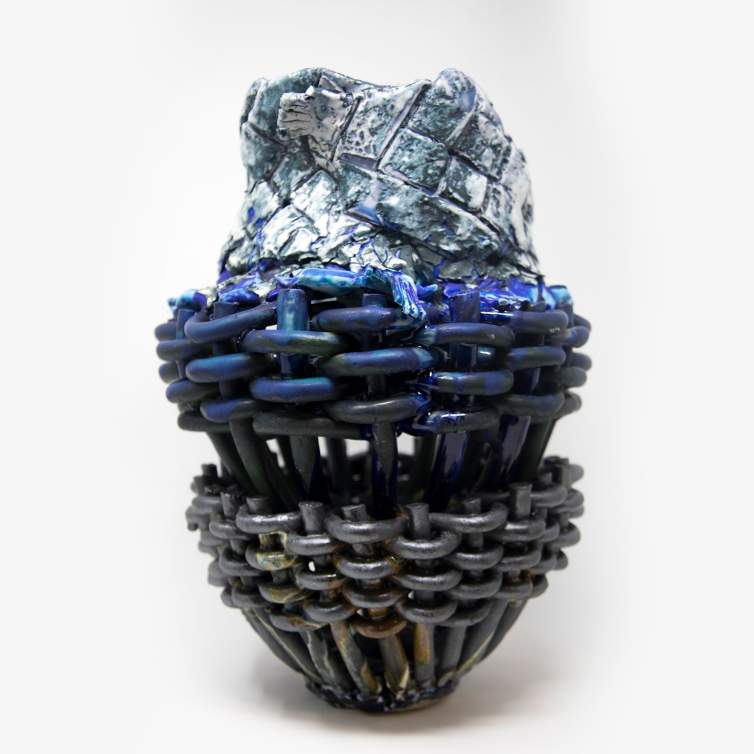
I'm not interested in recreating the straw objects made in the marketplace out of clay. That's not a goal of mine, but I do like the symbolic gesture of weaving and what it means for Bahamian straw vendors that work in this fashion. I think about how this is a much larger performance. When you look at the history of that craft and how it's undervalued even by the people who engage with it, I wanted to look for other ways in which that can be meaningful. I’m interested in how this act or language of weaving can communicate in ways that have not been done before.
It is believed that the history of this technique comes from enslaved individuals who were transported from Africa to the Caribbean. So when I think about the fact that this language or this gesture of weaving has a layered history within it, I'm really fascinated by that. I'm fascinated by my lineage to that and how I can use that technique to talk about my lived experiences without words.
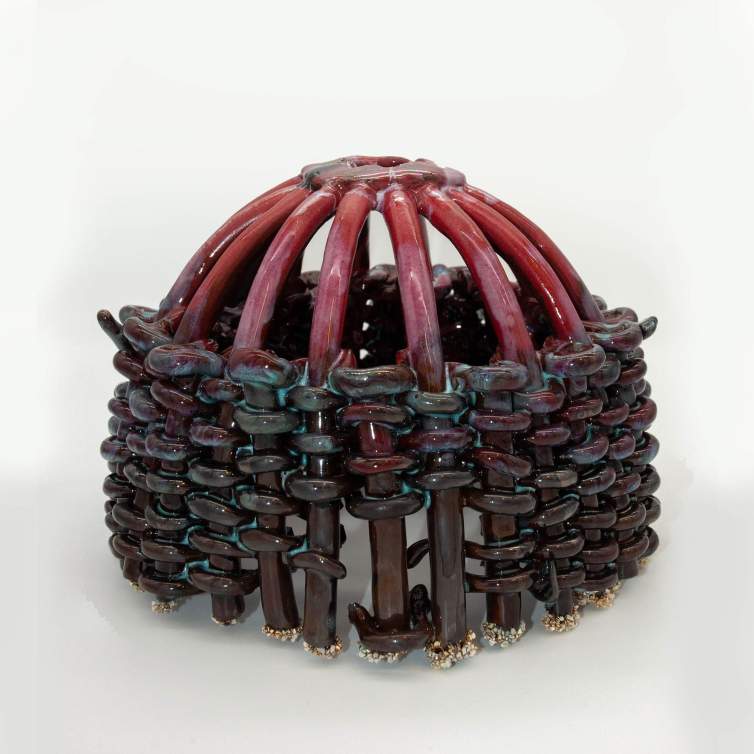
Across the diaspora, when we talk about Black individuals, we talk about how there are all these disconnects. That's so true, especially for the Caribbean. Most of our history has been composed for the sake of marketing. There's a lot lost in cultural erasure, but there are things that just keep resonating. And so, the ability to be able to see that this same type of weaving is practiced in Ghana or another part of the continent—that reconnects us. You see that happening through music, food, stories, and sometimes language. If we keep going back and aligning with those historical cultural practices, we will see that weaving is another thing that could connect us.
It's about how I'm able to infuse cultural connection through the sculptures, with individuals who may have similar shared histories and not quite know why. It’s not translated into words, but essentially letting it grow as its own language through the research of weaving engaged by other islands or countries with similar histories and identifying how it overlaps with my own.
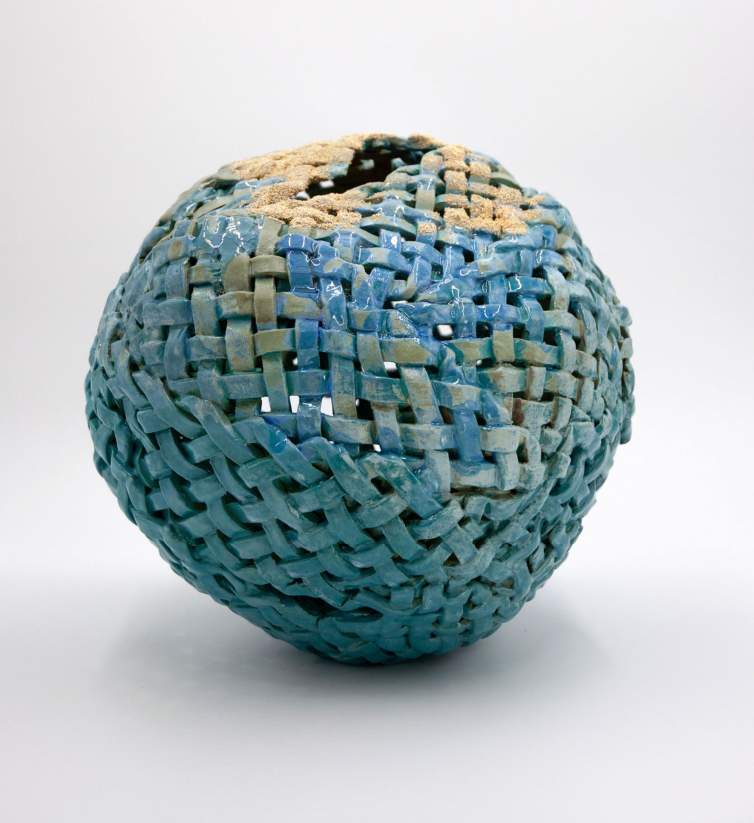
I was already in love with clay when I started weaving. The connection between the two came from this doll from the Bahamas that I found in a Brooklyn vintage store on a snowy day. I was like, "Why is this doll here?" It felt like the doll was displaced in the same way that I was feeling displaced because I was realizing I was not going to be living in The Bahamas anymore.
I felt some weird kinship to this doll. Mind you, in The Bahamas, this was a doll that was made for tourists. I didn't play with dolls like this. In that context, there was no relationship. But in this context, it seemed to resonate in these ways. I took the doll back to my studio, where at the time I was making aquatic-temperature, textured things in clay. I thought, "I will make you again so that no one feels the need to discard you."
I think ultimately what I was trying to do in clay was to preserve something. I was trying to preserve a material culture, a group of people’s existence—and what better material for that than clay? When you think about it, our understanding of everything is from discovered ceramic remnants. For example, we know about some of the earliest baskets because of imprints on ceramic shards. So as I was taking apart this straw doll, thinking about how to make it again, I thought, if the goal is to get people to reconsider the value of weaving and to preserve this the best way possible, then it makes sense to use clay.
That eventually led me to a very strict rule. I do a lot of experimenting, but the one rule that I have is that I will use clay for the purpose of preserving something. That is its purpose within my practice. For me it's very historical, very anthropological. I am making something that is intended to live beyond my existence, so that when inevitably we rewrite history, as you can see happening today, there's no dispute about whether this existed. Even if it's in fragments.
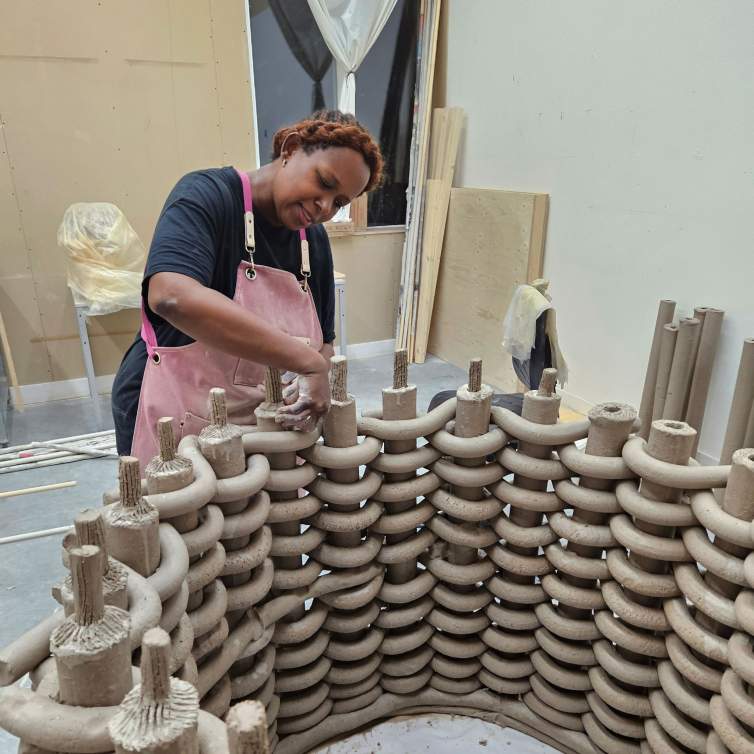
The process of working with clay is such a beautiful, poetic metaphor for what I'm actually trying to talk about, which is that you go through stages of vulnerability and moments when you're strong in life. Moments when you're fragile. Moments when you're weak. And you are sometimes subjected to moments of extreme pressure. You don't know how you'll come out in the end, but somehow you come out in a somewhat stronger state, but still fragile. A kind of strength in vulnerability.
When I think about my lived experiences, it has that kind of nuance. It has that kind of dynamism. How could these two things exist together? How can beauty and pain coexist? How can permanency coexist with fragility? Those are questions I think through with my work, and clay seems to communicate that very well. It's all about loss and transformation.
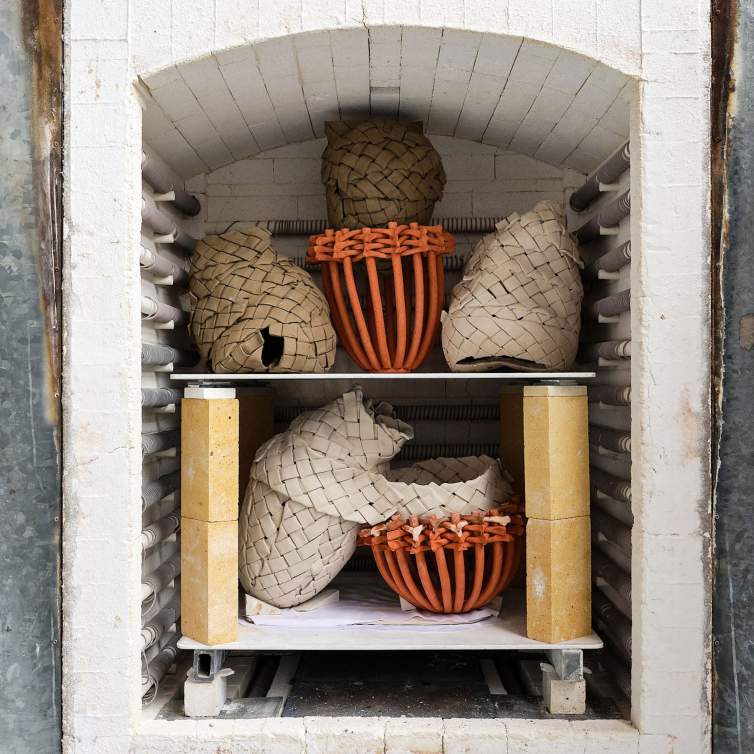
The scale of my work varies from six inches to six feet. The average size of my work is between 18 and 24 inches in any dimension. I think that's directly related to the scale of my body, and that's a comfortable size. It allows me to do enough to get the details in. It allows enough surface for you to see the change in what's being documented. But I’ve also recently been working much larger—more like three or four feet—and I've come to realize that it changes the whole movement of my body. It’s something that goes from hands and fingers into my shoulders, arms, and thighs.
All this time, I've been developing this language with variation, so you see different notes. But the minute I changed the scale, it was like turning up the volume. I get to choose what notes or which points of inflection become louder or more emphasized.
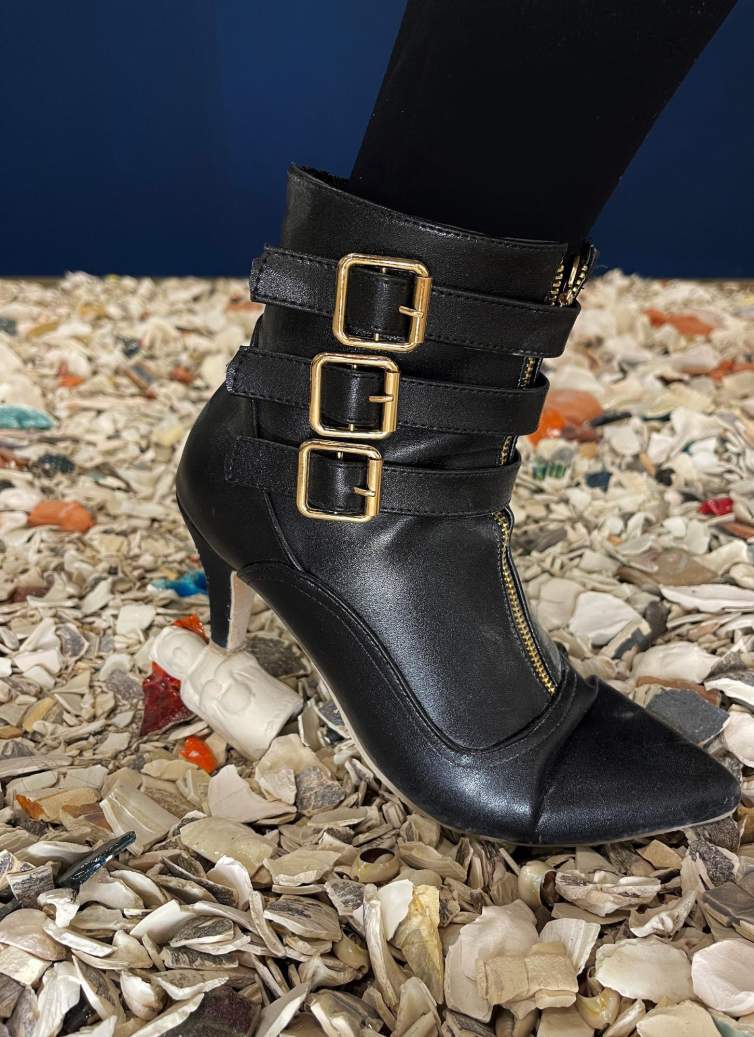
Recently, I have been working on sculptural pieces and a performance installation piece that opened in March at MoAD, San Francisco. I will be doing a live performance with the installation on August 1st.
Because I'm always telling stories in my head, alongside my sculptural work, there's overlap with installations and performance, where I can be a little bit more immersive. With this piece, I’m essentially thinking through how fragments of ceramic material get buried and resurface. It’s also about how the movement, this marching that I'm doing, connects my body with a group of people on another continent, through the materiality of the shards. The poet Derek Wilcox talks about fragments and how he relates it to being able to identify oneself from the Caribbean, because it's just a combination of all these different cultures that have come together to make what we call “Caribbean.” He likens it to a broken vase.
Because I don't believe in waste, I've been collecting fragments, and I've also been infusing them with shells. The shells to me introduce another protective element. The clay is meant to protect and preserve, and here the shell represents the same, being a protective home for an animal. So I’m integrating that into floor coverings in my installations. It’s questioning, what happens when everything has been broken and destroyed? What's left? What are these fragments and how can these fragments connect us?
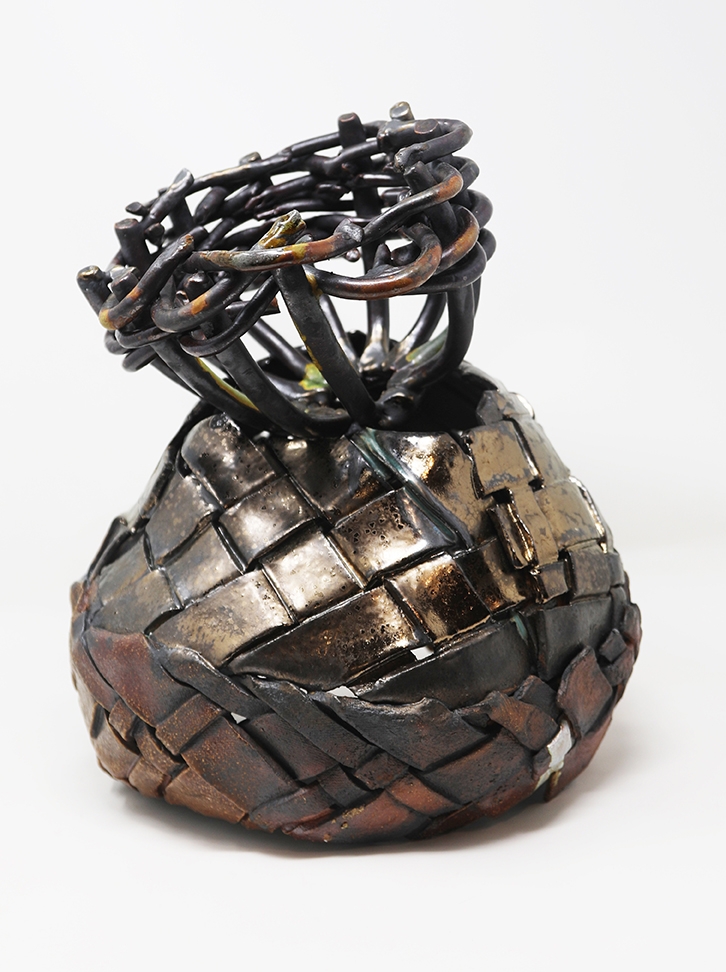
It is my hope that when people in The Bahamas see my work, they might walk away with a new understanding of value and appreciation for these traditional weaving forms that they never had before. The first time I showed this work at home was last year, in a solo show in March. What I realized was that a lot of people didn't think of plaiting, beyond the marketplace and making money. But now, we can begin to think beyond the economic aspects, which I hope also opens minds to ways in which it serves us to think beyond, catering to a particular group of people. If we can think beyond that history with this weaving practice, then we can think beyond a lot of other things that we undervalue within society. Like women's contributions, their rights, their voices. There are all these things that come along with this, but how do I get us to start thinking about that?
And for all people, when they see my work, I would love for them to walk away with an agency of creating one's own stories and legacy, of preserving one's own existence. An appreciation for labor, for work, for sacrifice, for resourcefulness, for resilience. To consider How do we value the contributions of underrepresented communities with nondominant narratives for the contributions they have made to our contemporary society? ? How do we shift to that perspective?
Interview and editing by Jenny Gill. Learn more about Anina Major’s work at aninamajor.com and on Instagram.